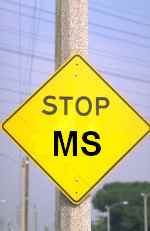Hoffman’s Sign

A test which may reveal the presence of a lesion in the upper motor neuron in the spinal cord. A positive sign occurs when there is a reflexive response in the thumb to tapping the nail of the third or fourth finger. Normally, there should be no reaction from the muscles in the thumb.
A positive Hoffman’s test may be associated with a lack of grip in the affected hand.
There are a number of neurological conditions which may elicit the Hoffman’s response which include: cervical spondylitis, spinal cord compression, upper motor neuron disease and multiple sclerosis.
References:
Multiple Sclerosis Encyclopaedia
Wheeless’ Textbook of Orthopaedics